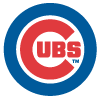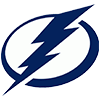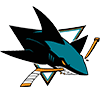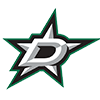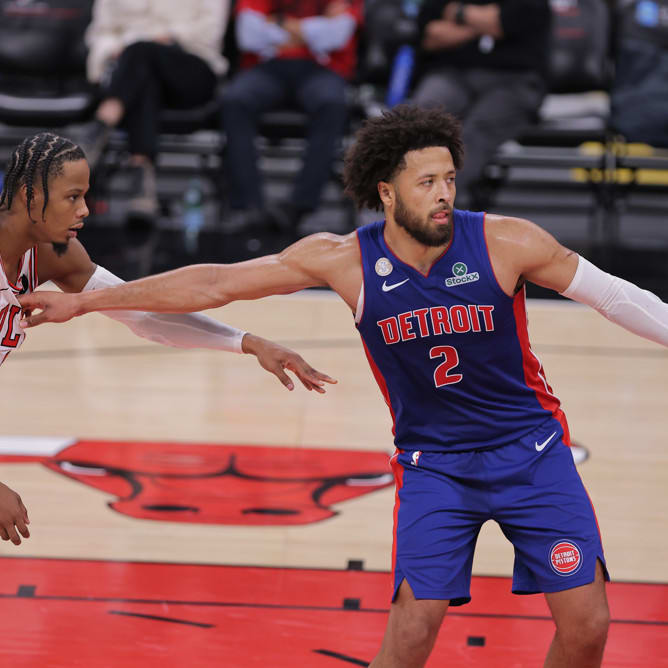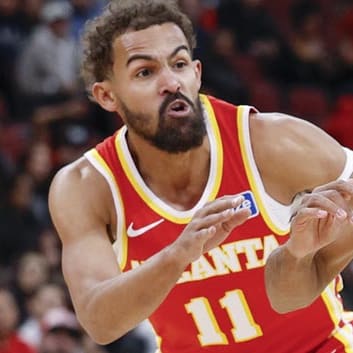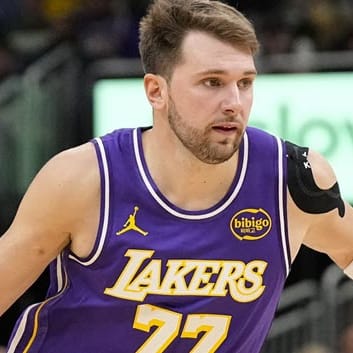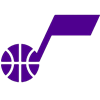 Jazz (1) vs.
Jazz (1) vs.  Clippers (4)
Clippers (4)
Series Line: Jazz -139, Clippers +112
Biggest Strengths and Weaknesses (Regular-Season Rank)
Jazz Strengths
- Offensive Rebounding (5th)
- Defensive Rebounding (2nd)
- Limiting Opponent Free Throws (1st)
- 3P% (3rd)
- Opponent Mid-Range Shooting % (5th)
- Opponent 3P% (2nd)
Jazz Weaknesses
- Forcing Turnovers (30th)
Clippers Strengths
- 3P% (1st)
Clippers Weaknesses
- Opponent Long Mid-Range Shooting % (27th)
After a surprising Game 1 loss to the Grizzlies, the Jazz took care of business the rest of the way and won the series in five games. The Clippers' Round 1 series went much differently, as they needed seven games to dispose of the Mavericks, and the only home game that resulted in a win was the decisive final game.
The Jazz got excellent production from nearly the whole team in Round 1, as they shot 49/41/85 against Memphis. Utah had five players score over 17 points per game, and Donovan Mitchell led the team with an efficient 28.5 points and 5.8 assists. Mike Conley was phenomenal, scoring 17.4 points on 47/55/100 shooting and dishing 43 assists to just eight turnovers. Rudy Gobert averaged 17-and-13 with 3.2 blocks on 77.8 percent shooting. The only main battle Utah lost against Memphis was turnovers, where the Jazz handed out 64 turnovers to the Grizzlies' 52.
It should be considered an indictment on the Clippers that they needed seven games to dispose of the Mavericks, who were playing with a less-than-100-percent Luka Doncic for half the series, plus a checked-out Kristaps Porzingis, who averaged just
 Jazz (1) vs.
Jazz (1) vs.  Clippers (4)
Clippers (4)
Series Line: Jazz -139, Clippers +112
Biggest Strengths and Weaknesses (Regular-Season Rank)
Jazz Strengths
- Offensive Rebounding (5th)
- Defensive Rebounding (2nd)
- Limiting Opponent Free Throws (1st)
- 3P% (3rd)
- Opponent Mid-Range Shooting % (5th)
- Opponent 3P% (2nd)
Jazz Weaknesses
- Forcing Turnovers (30th)
Clippers Strengths
- 3P% (1st)
Clippers Weaknesses
- Opponent Long Mid-Range Shooting % (27th)
After a surprising Game 1 loss to the Grizzlies, the Jazz took care of business the rest of the way and won the series in five games. The Clippers' Round 1 series went much differently, as they needed seven games to dispose of the Mavericks, and the only home game that resulted in a win was the decisive final game.
The Jazz got excellent production from nearly the whole team in Round 1, as they shot 49/41/85 against Memphis. Utah had five players score over 17 points per game, and Donovan Mitchell led the team with an efficient 28.5 points and 5.8 assists. Mike Conley was phenomenal, scoring 17.4 points on 47/55/100 shooting and dishing 43 assists to just eight turnovers. Rudy Gobert averaged 17-and-13 with 3.2 blocks on 77.8 percent shooting. The only main battle Utah lost against Memphis was turnovers, where the Jazz handed out 64 turnovers to the Grizzlies' 52.
It should be considered an indictment on the Clippers that they needed seven games to dispose of the Mavericks, who were playing with a less-than-100-percent Luka Doncic for half the series, plus a checked-out Kristaps Porzingis, who averaged just 13.1 points and 5.4 rebounds. Still, the Clippers got it done, and Kawhi Leonard looked incredible. The two-time Finals MVP averaged 32.1 points on 61/43/90 shooting, 7.9 rebounds, 4.6 assists, 2.3 steals and 1.0 blocks in 40.7 minutes. Paul George couldn't find his three-ball, hitting just 30.6 percent from deep, but he still averaged 24-9-6. Reggie Jackson stepped up in a big way as well, averaging 15.4 points on 43/39/88 shooting. However, the Clippers' main concern still has to be: where are we getting consistent production outside of Leonard and George? The Clippers are heavily reliant on making threes for offense. When that doesn't work, the gameplan turns into Kawhi-Leonard-please-save-us mode. It barely worked in Round 1 against a much inferior opponent than the Jazz.
 Nets (2) vs.
Nets (2) vs. 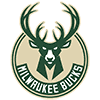 Bucks (3)
Bucks (3)
Series Line: Nets -200, Bucks +160
Biggest Strengths and Weaknesses
Nets Strengths
- Free Throw Rate (5th)
- Mid-Range Shooting % (2nd)
- 3P% (2nd)
- Opponent 3P% (1st)
Nets Weaknesses
- Forcing Turnovers (27th)
Bucks Strengths
- Shooting % at Rim (3rd)
- Defensive Rebounding (3rd)
- Opponent Free Throw Rate (2nd)
- Opponent Shooting % at Rim (4th)
- Non-Corner 3P% (5th)
Bucks Weaknesses
- Opponent 3P% (29th)
In what could end up being the "real" NBA Finals, the Nets and Bucks are squaring off in the second round of the playoffs. The Nets needed only five games to dispose of the short-handed Celtics, while the Bucks swept the Heat in compelling fashion.
Brooklyn shot a scorching-hot 42.6 percent from three against Boston, and they'll be facing another team that gives up plenty of open threes, with the Bucks ranking second-to-last in opponent three-point percentage allowed during the regular season (39.3%). Part of that is due to the drop coverage Milwaukee plays on defense, featuring Brook Lopez falling back to the rim to stop easy layups off screens. However, that strategy can fail against great jumpshooters, and Brooklyn happens to have four elite shooters.
Conversely, where the Bucks can thrive is at the rim, where the Nets lack great rim protection. DeAndre Jordan did not see the court in the Boston series, and Nicolas Claxton played just 13.1 minutes per game. Milwaukee dominated the Heat -- a team with much better rim protection -- on the inside. The Bucks rebounded 32.4 percent of their own misses against Miami and shot 68.0 percent at the rim, and that was with Giannis Antetokounmpo converting just 54.7 percent of his two-pointers compared to his regular-season mark of 63.6 percent. Ultimately, this series may come down to the Nets' three-point shooting vs. the Bucks' interior offense.
 76ers (1) vs.
76ers (1) vs. 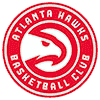 Hawks (5)
Hawks (5)
Series Line: 76ers -200, Hawks +155
Biggest Strengths and Weaknesses
76ers Strengths
- Free Throw Rate (1st)
- Forcing Turnovers (3rd)
- Mid-Range Shooting % (4th)
- Opponent Mid-Range Shooting % (1st)
- Opponent Corner 3P% (5th)
76ers Weaknesses
- Turnovers (20th)
Hawks Strengths
- Free Throw Rate (2nd)
- Long Mid-Range Shooting % (5th)
- Opponent 3P% (3rd)
Hawks Weaknesses
- Forcing Turnovers (29th)
The 76ers defeated the Wizards in convincing fashion, even with Joel Embiid suffering a small tear in his meniscus during Game 4 and not playing in the deciding Game 5. His health is the overarching factor in this series. The Hawks also defeated the Knicks in just five games, and Trae Young looked fantastic in his first-ever postseason series.
A hobbled or unavailable Embiid will cause issues for the 76ers. During the regular season, lineups without Embiid had a -1.0 point differential, implying Philadelphia is roughly a .500 team without him. During their first-round series against Washington, Philly also lost the Embiid-OFF minutes by -3.8 points per 100 possessions. The main issue in those minutes is the offense. Without Embiid, the Sixers had a 108.4 offensive rating during the regular season -- the exact rate of the Pistons' offense. If Embiid is healthy, the 76ers have the tools to slow down Atlanta's offense. Ben Simmons and Matisse Thybulle will likely check Trae Young, and Embiid should stop easy lobs to Clint Capela.
The Young to Capela threat continued to thrive against the Knicks, as it did in the regular season. Young averaged 29-and-10, while Capela averaged 10-and-13 on 66.7 percent shooting. However, the X Factor so far has been the Bogdan Bogdanovic minutes. The Hawks have a net rating of +21.1 with Bogdanovic on the court despite averaging a modest 14.4 points, 6.6 rebounds and 3.8 assists while shooting 41.4 percent from the field and 33.3 percent from three with no free throws attempted. He had just four turnovers all series, and he makes effectively trapping Young difficult, as Bogdanovic is a great secondary playmaker. However, the 76ers have more defensive tools than the Knicks, and the Hawks' go-to pick-and-roll action may get shut down. In that case, generating offense will become difficult.
 Suns (2) vs.
Suns (2) vs.  Nuggets (3)
Nuggets (3)
Series Line: Suns -220, Nuggets +175
Biggest Strengths and Weaknesses
Nuggets Strengths
- Offensive Rebounding (2nd)
- Shooting % at Rim (4th)
- Mid-Range Shooting % (3rd)
- Corner 3P% (4th)
Nuggets Weaknesses
- Free-Throw Rate (28th)
- Opponent Shooting % at Rim (30th)
Suns Strengths
- Lack of Turnovers (4th)
- Mid-Range Shooting % (1st)
- Corner 3 Shooting % (2nd)
- Opponent 3P% (5th)
Suns Weaknesses
- Free Throw Rate (26th)
With Anthony Davis hobbled, the Suns took down last season's champions, the Lakers, in just six games. The Nuggets also secured a six-game victory over the Trail Blazers despite being down Jamal Murray while Portland was fully healthy.
Devin Booker and Deandre Ayton looked plenty comfortable in their career playoff series. Booker averaged 29.7 points and 5.0 assists while shooting 49/43/94. Ayton averaged 16-and-11 while shooting 80 percent (!) from the field. It's encouraging that the Suns claimed such a decisive Round 1 victory with Chris Paul dealing with a shoulder injury as well, and he averaged just 9.2 points and 7.7 assists on 39 FG%. If he's 100% healthy, or close to it, for Round 2, the Suns are in the driver's seat once again.
Nikola Jokic looked unstoppable in Round 1. He averaged 33/11/5 while shooting 53/43/92. Michael Porter's shots continued to fall as well, as he too claimed a 50/40/90 shooting clip in the first round on his 18.8 points per game. Monte Morris stepped up in the absence of Jamal Murray and delivered 15-and-6 averages with just six total turnovers. The whole team caught fire from deep, hitting 40.6 percent of their threes as a collective. That could come to a screeching halt in this round, as the Suns claimed the league's fifth-best opponent 3P% during the regular season. Ayton likely also has a better chance of slowing down Jokic than Jusuf Nurkic did. However, if Ayton gets in foul trouble, the Suns don't have a backup big.














